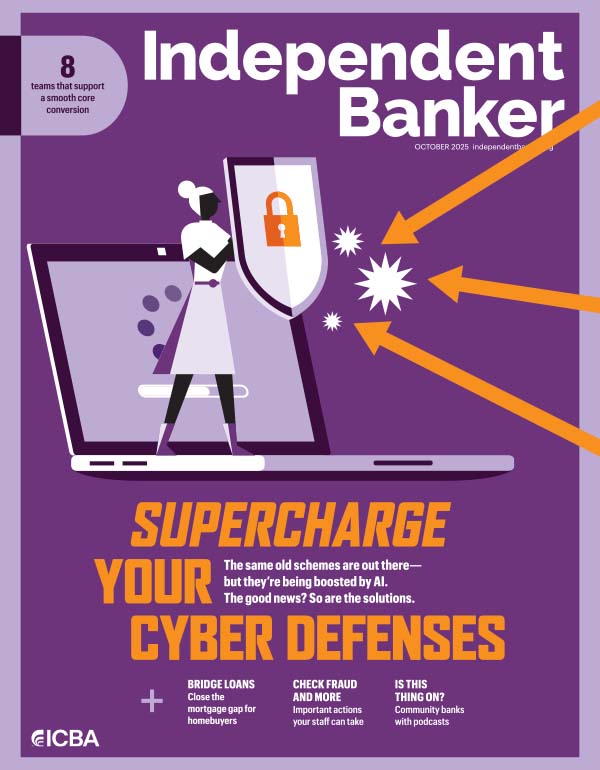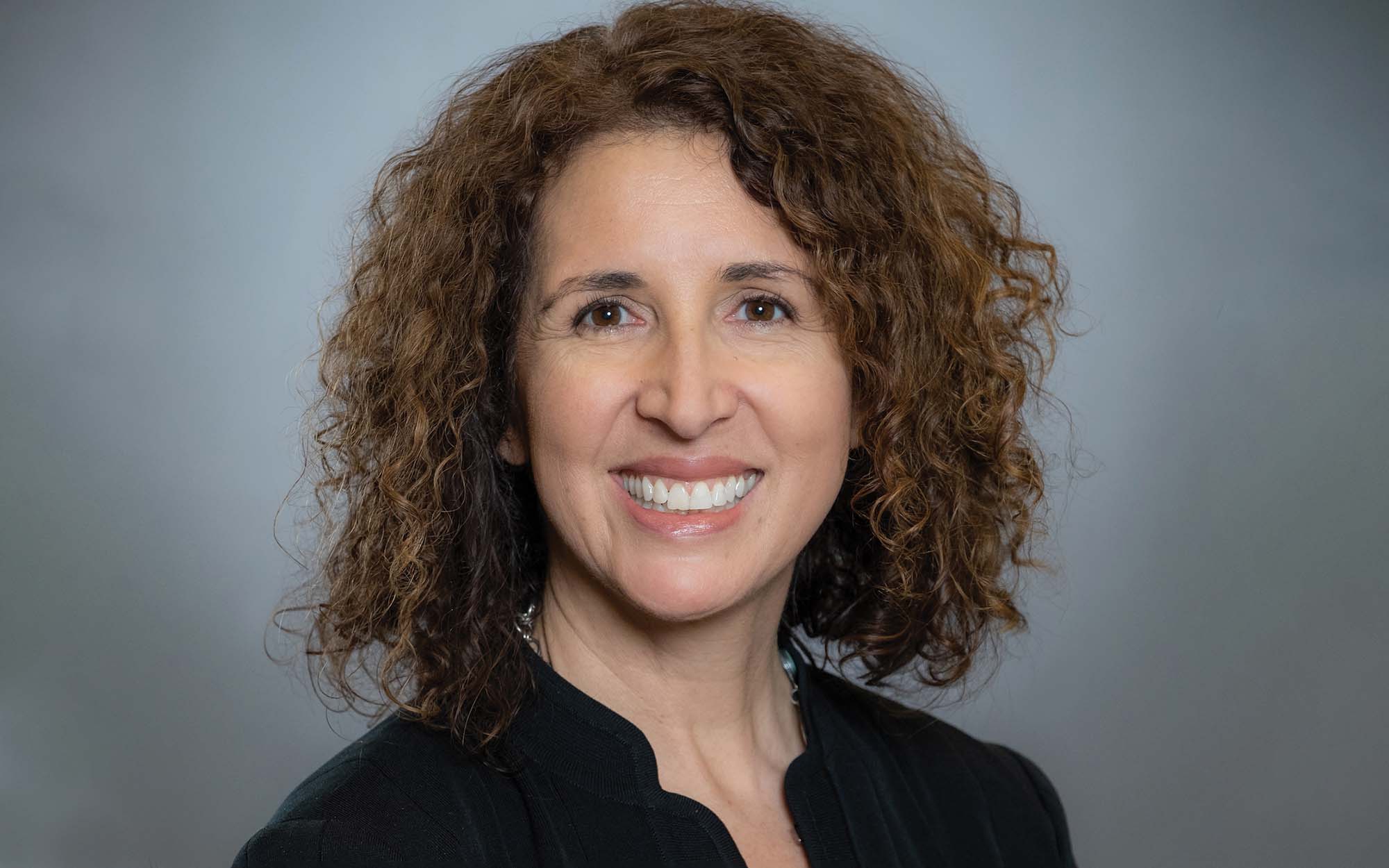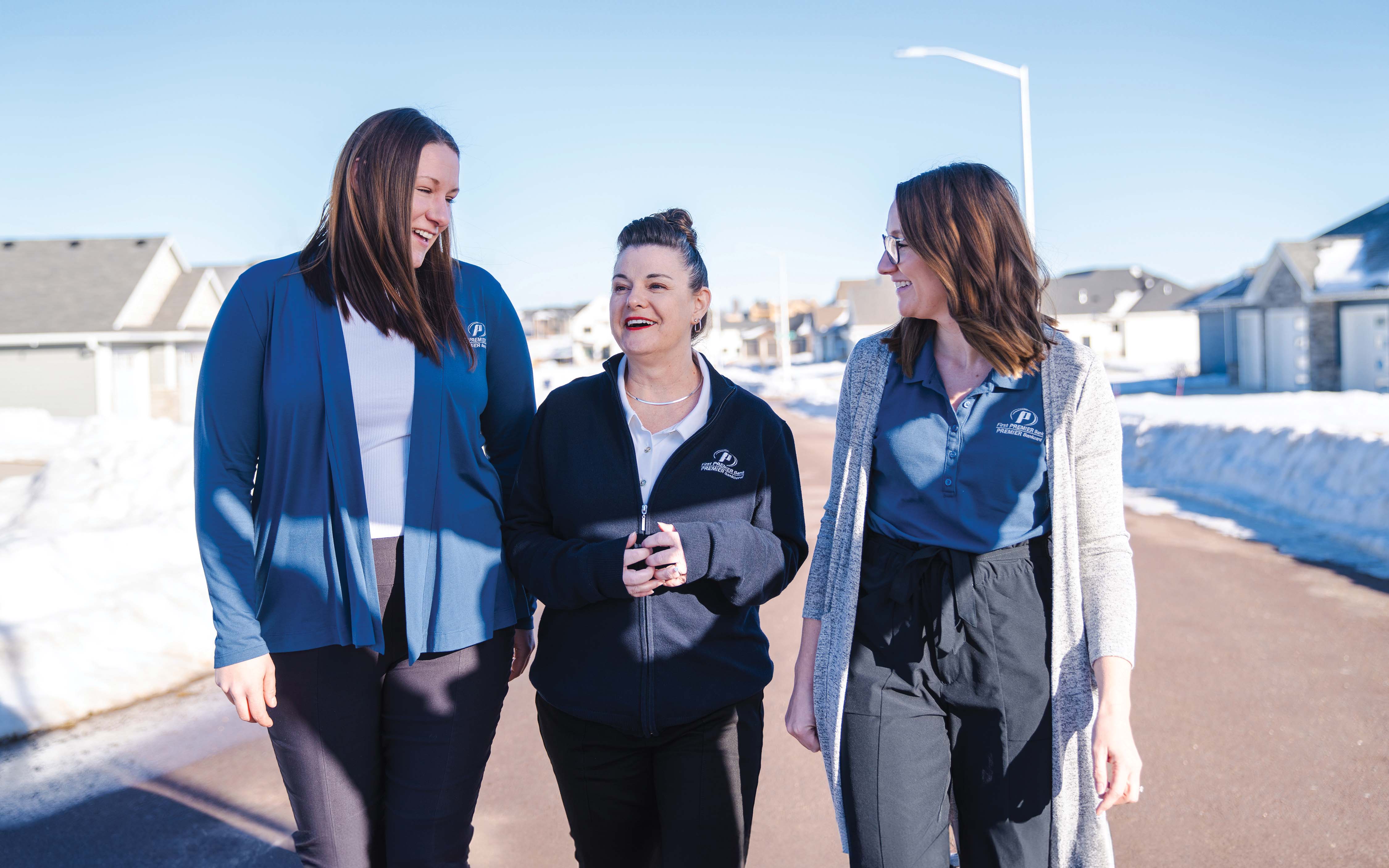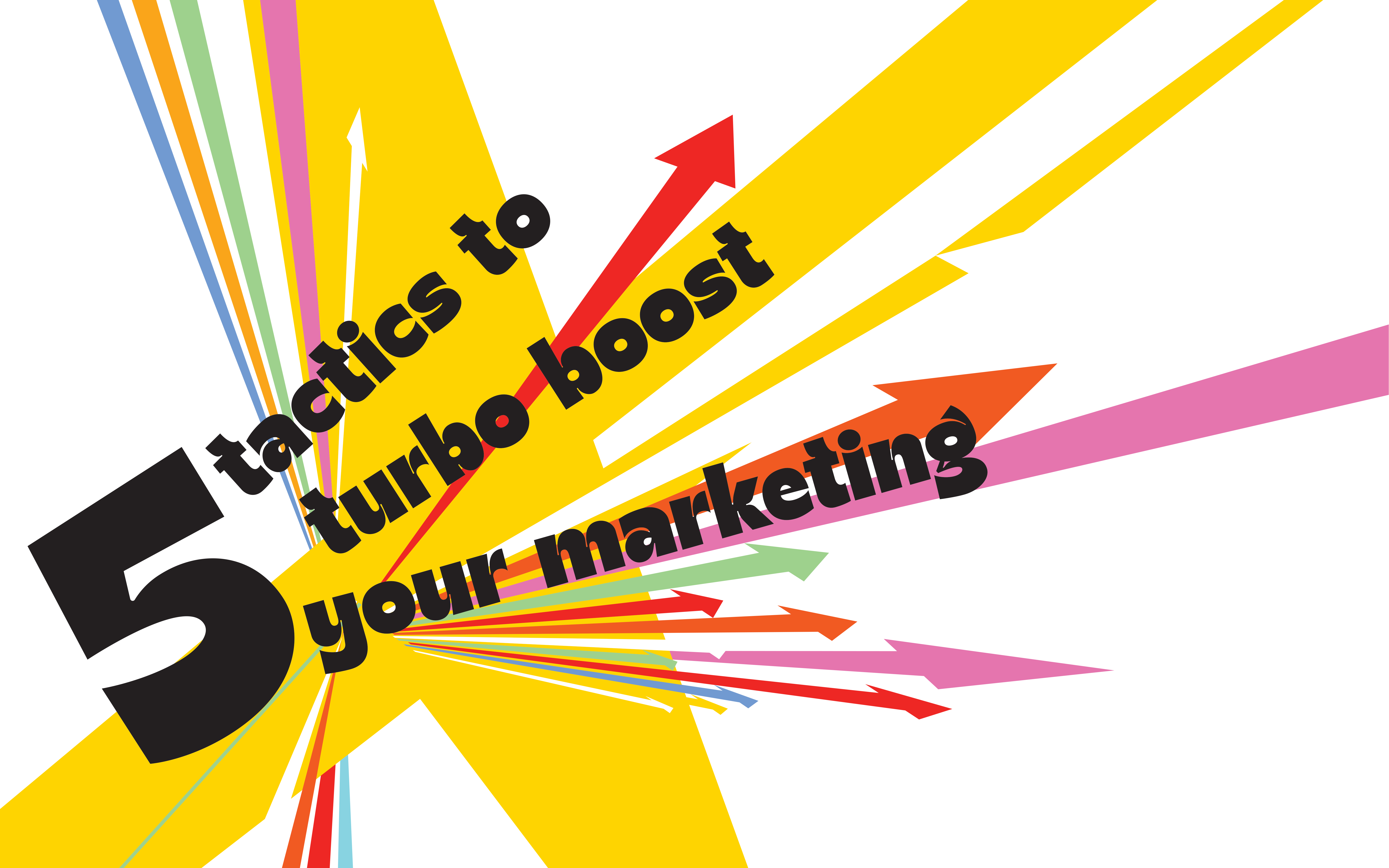When $465 million-asset Dean Bank in Franklin, Mass., recently got wind that a nearby competitor would be closing its doors, the leadership team jumped into action to offer a home to community members who were now left without a bank branch.
Without naming its competitor, Dean Bank devised an awareness campaign that reinforced the 130-year-old bank’s position as a “tried-and-true, trusted local financial resource.” QR codes placed in community newspaper ads and banner ads on local websites led prospective customers to a specific landing page on Dean Bank’s website.
“We were hopeful that this campaign would target some of those disgruntled and displaced customers,” says Michael Carroll, senior vice president and marketing and communications officer for the community bank. “Overall, it was very effective. We know that we had new visitors to our website. We know that we increased awareness of Dean Bank as a viable alternative in this very narrow footprint that we live in.”

With just under 3,000 visitors to that unique landing page over six weeks, it became the sixth most popular page on Dean Bank’s website. Over the course of the campaign, the bank experienced a 33% increase in new account openings compared with its four-year average for the same period. It also opened 25 safe deposit boxes and secured nearly $500,000 in deposit accounts from new customers who presented checks from the closing competitor bank.
“We try to balance analytics with actual product openings,” says Carroll. “Sure, we hope that people see our offerings and visit our website, but as our CEO always says, ‘Clicks don’t pay the light bill.’”
There’s still a place for traditional advertising
Observe how most people consume most of their media, and it would be easy to assume that traditional advertising avenues are dead. But that is simply not true—especially for community banks.
According to the Fall 2023 CMO Survey—a noncommercial survey for and about the field of marketing—banking and finance companies plan to invest more heavily in traditional advertising in the coming year, increasing spend by 3.82% in the next 12 months. Traditional advertising and marketing spend is on the rise for other industries as well—jumping 77% overall between spring and fall 2023—but remains in pre-COVID negative growth territory.
“I believe there is still a role for the more traditional channels, provided the focus is local.”—Michael Carroll, Dean Bank
The reason traditional advertising is so effective for community banks is because it naturally ties into the way they do business.
“I believe there is still a role for the more traditional channels, provided the focus is local,” says Carroll. “Consumers are not using the paper or radio station to obtain world, national or even regional news these days. They read or listen to see what’s happening in their town, their schools and their community. As a small community bank, our messaging in print and on local radio reinforces our mission to be a resource for the communities we serve.”
He notes that placing that message in channels important to the residents and businesses of those communities continues to return positive results—both through increased awareness of the bank and through new account acquisition.
Park Bank’s blended strategy
An effective campaign strategy that used both traditional and digital mediums is what earned Park Bank in Madison, Wis., a reputation as the “bank for nonprofits” after it launched nonprofit banking accounts in 2021.
To market the account, the $1.5 billion-asset community bank asked, “Where do nonprofit organizations live? What kind of content are they consuming?” says Helen Kosterman, Park Bank’s vice president of marketing and communications. Its findings resulted in print ads in four local magazines with different target audiences—businesses, women, people of color and “Madison lifestyle”—plus paid social media and Google ads, and paid search and display.
In another campaign to advertise a new branch in Cross Plains, Wis., Park Bank sent out direct mail pieces with QR codes directing prospective customers to its website. It also purchased billboard space along the 4,000-person town’s main street.
“The area is a little older. It’s a very tight-knit community and there had been only one banking presence in the community for as long as I know,” says Kosterman. “I wanted to approach it with more delicate advertising.”
Striking a balance between traditional and digital strategies
Dean Bank and Park Bank highlight two keys to success in their recent campaigns: They layered traditional and digital strategies, and they knew their audiences.
In terms of age range, “integrating traditional and digital [strategies] is very impactful because you’re catching people at both ends of the spectrum,” says James Pannos, president of Manchester, N.H.-based financial marketing agency Pannos Marketing, Dean Bank’s marketing agency. “If you are trying to create some brand awareness or have a new logo or a new branch going up, yes, we want to do digital for you, we want to do social media for you. But we also may suggest billboards in heavily trafficked areas in the market you serve, as well as print ads.”
Derek Baker, executive vice president of growth and innovation for the Storm Lake, Iowa, financial marketing agency Mills Marketing—Park Bank’s marketing agency—says its clients fall into one of four buckets: those that use both traditional and digital advertising strategies, those that only use digital, those who only use traditional or those that do nothing. Which category a community bank falls into primarily comes down to budget—and traditional advertising is inherently more expensive than digital.
“[Banks] are going digital-heavy because the traditional tactics are increasing in price with inflation,” Baker says. “Postage is up, print ads are up, it’s harder to source paper. Understanding the dollar amount you’re going to spend, you have to find the most efficient channels. That could rule out some components you want to use because you’re limited by budget. Traditional is harder. I’m willing to acknowledge that for sure.”
How to execute an effective non-digital campaign
While it may be harder to stretch that proverbial dollar when it comes to traditional advertising tactics, there is still a place for print ads, billboards, and TV and radio commercials in community banks’ marketing budgets. Here’s how the experts suggest crafting effective campaigns.
Target a hyperlocal market. Rather than place a print or radio ad in a regional or state outlet—where people who see or hear the ad may not live near a branch—opt for space in a community publication or local station.
Layer traditional tactics with digital strategies. If you’re going to send direct mail or advertise on a billboard or poster at your local mall, incorporate a QR code that prospective customers can scan that leads them to your website. “Don’t send a bunch of traditional advertising pieces that don’t have any tracking in place,” says Baker.
Create multipurpose advertising collateral. Video, for example, can be viewed on television, streaming services, YouTube and social media. “It bridges the gap between [channels and demographics],” says Pannos.
Tailor the advertising strategy to the product and intended audience. Traditional advertising works better for some products than others. Customers who are interested in certificates of deposit or an individual retirement account may skew older, so a TV commercial or print ad could better reach them.
Be where other banks are not. “Banking is a very saturated market,” says Kosterman. “If you go to a local stadium, you’re going to see at least five or six other financial institutions there, so you might get lost in the mix.” Instead, look for advertising opportunities where your community bank can stand out.
Most importantly, your marketing efforts must align with your bank’s brand and target audience—a lesson that applies to traditional and digital advertising strategies.
“If you’ve always done something one way, you can’t just all of a sudden flip the switch and do it a totally different way,” says Baker. “Make sure [your advertising] is accurately representing yourself [and your audience]. Understand your plan and understand how it incorporates into who you are. If it doesn’t fit, don’t force it.”
Marketing: First to go, but best to grow
During budget time, it’s often the marketing expenses that get cut first—but that’s a mistake, says Derek Baker, vice president of growth and innovation for financial marketing agency Mills Marketing. While marketing may seem like an easy way to tighten your belt, it’s also your strongest tool for acquiring new business. “The brands that aren’t slowing down, the ones that get it, either maintain or grow their budgets,” says Baker. “When you’re measuring appropriately, when you’re using the data, when you’re providing the information, when you’re tracking as much as you possibly can, you can start to tell better stories, which can help you advocate for your budget.” Marketing should be viewed as an investment, not an expense, he adds.






